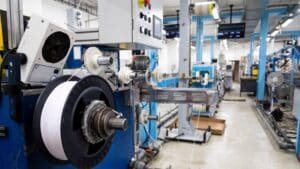3D printing has become an increasingly popular technology, revolutionizing the way we create prototypes, personalized items, and even intricate components. However, one aspect often overlooked by enthusiasts and professionals alike is the shelf life of 3D printer filament. Many users wonder if filament can go bad over time and, if so, what factors contribute to its degradation. In this article, we will explore the shelf life of 3D printer filament and the potential signs of deterioration.
3D printer filament is typically made from various materials, including PLA (polylactic acid), ABS (acrylonitrile butadiene styrene), PETG (polyethylene terephthalate glycol), and more. These materials have different properties and are chosen based on the specific requirements of a printing project. However, all filaments can be susceptible to degradation over time.
Factors Affecting Filament Shelf Life:
- Humidity:
One of the primary factors influencing the shelf life of 3D printer filament is humidity. Most filaments are hygroscopic, meaning they absorb moisture from the air. This can lead to problems during printing, such as reduced print quality, increased brittleness, and even clogging of the extruder. Vacuum-sealed packaging and desiccant packets are commonly used to minimize moisture absorption during storage. - UV Exposure:
Filaments left in direct sunlight or exposed to ultraviolet (UV) radiation for extended periods can experience degradation. UV rays can break down the molecular structure of the filament, leading to changes in its physical properties, such as color fading and increased brittleness. - Temperature Fluctuations:
Extreme temperature variations can affect the consistency of 3D printer filament. Storage in overly hot or cold environments can lead to warping, brittleness, and changes in dimensional accuracy. It is advisable to store filament in a cool, dry place away from direct sunlight and temperature extremes.
Signs of Filament Deterioration:
- Brittleness:
If your filament becomes more brittle and prone to snapping, it may be a sign of degradation. This can result from a combination of factors, including moisture absorption and exposure to UV radiation. - Inconsistent Print Quality:
Deteriorated filament may lead to inconsistent print quality, with layers not adhering properly or an overall reduction in the structural integrity of the printed object. - Excessive Stringing and Clogging:
Moisture-absorbed filament is more likely to cause issues such as stringing and nozzle clogging during printing. If you notice an increase in these problems, it may be an indication that the filament has absorbed moisture over time.
While 3D printer filament does have a shelf life and can degrade under certain conditions, proper storage and handling can significantly extend its usability. Users should be mindful of environmental factors such as humidity, UV exposure, and temperature fluctuations. Regularly inspecting filament for signs of deterioration and taking preventive measures, such as using sealed storage containers and desiccant packets, can help ensure the longevity of your filament and maintain optimal 3D printing results.




